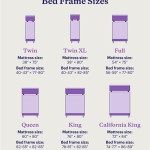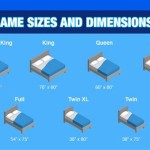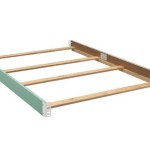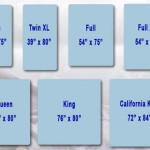```html
Selecting the Right Rug Size Under a Twin Bed
Choosing the appropriate rug size for placement under a twin bed is a crucial element in interior design, impacting both the aesthetic appeal and the functional comfort of a room. The rug serves not only as a decorative element, tying the room together with color, texture, and pattern, but also as a practical element, providing warmth and cushioning underfoot. Selecting the wrong size rug can disrupt the visual balance of the space and diminish its overall comfort.
This article will explore the key considerations when determining the ideal rug size for a twin bed, focusing on dimensions, placement options, and style preferences. By understanding these factors, individuals can make informed decisions that enhance their bedrooms both visually and practically.
Understanding Standard Twin Bed Dimensions
The first step in selecting an appropriate rug size is understanding the standard dimensions of a twin bed. Generally, a twin bed measures approximately 39 inches wide and 75 inches long. These dimensions provide a foundation for determining the minimum rug size needed to achieve the desired aesthetic and functional goals. While these are standard sizes, slight variations can exist across manufacturers. It is always advisable to measure the specific bed frame accurately before making a rug purchase.
Knowing the bed's exact width and length allows for the calculation of the visible rug area. This calculation depends on the desired rug placement. For example, if the goal is for the rug to extend beyond the bed on all sides, at least two feet of extra rug width and length should be added to the bed’s dimensions. This ensures a substantial amount of rug is visible and accessible, providing comfort underfoot when getting out of bed.
Consideration must also be given to the presence of a headboard and footboard. A headboard typically sits flush against the wall, meaning the rug does not need to extend under it. However, if a footboard exists, the rug must extend far enough to accommodate its depth, ensuring the space remains visually cohesive.
Exploring Common Rug Placement Options
The placement of the rug under the twin bed significantly affects the room's overall appearance and the perceived size of the rug needed. Several popular rug placement options cater to different design preferences and functional requirements.
Option 1: Partial Coverage (Two-Thirds Coverage): This is a common and generally recommended approach. The rug is placed so that approximately two-thirds of the bed's length sits on the rug, with the headboard against the wall and the rug extending out from the foot of the bed. This arrangement creates a defined zone around the bed while leaving a portion of the floor visible. For a standard twin bed, a rug size of 5x8 feet or 6x9 feet is often suitable for this partial coverage approach. The rug extends beyond the sides of the bed, providing a soft landing for feet upon waking.
Option 2: Full Coverage: In this placement, the entire bed is positioned on the rug, with the rug extending beyond the bed's perimeter on all sides. This option is particularly effective in larger rooms as it creates a more grounded and luxurious feel. It is suitable for providing a warm and cohesive feel within a larger bedroom. A minimum rug size of 8x10 feet or 9x12 feet may be required to achieve full coverage under a twin bed while providing ample extension beyond the bed's footprint. This option requires careful consideration of the room's dimensions to avoid overwhelming the space.
Option 3: Rug Runner on the Side of the Bed: A rug runner placed alongside the bed offers a simple and cost-effective solution, particularly in smaller rooms where a large area rug would be impractical. This option primarily serves functional purposes, providing a soft surface for stepping onto. A standard runner, typically measuring 2-3 feet wide and 6-8 feet long, is suitable. The runner should extend at least the length of the exposed side of the bed to provide practical coverage. This method may not contribute as much to the overall aesthetic of the room as other placement options, but it fulfills a specific need for comfort and warmth underfoot.
Option 4: Layered Rugs: This stylistic choice involves layering a smaller rug on top of a larger, more neutral base rug. This allows for the introduction of patterns, textures, and colors without committing to a large, visually dominant area rug. The underlying, larger rug often extends beneath the entire bed, while the smaller, decorative rug is placed strategically to highlight a specific area, such as the foot of the bed. This option creates visual depth and complexity, offering a unique and personalized aesthetic. It can be particularly effective in rooms with minimalist decor.
Considering Style, Material, and Room Aesthetics
Beyond size and placement, the style, material, and overall aesthetics of the room significantly influence the rug selection process. Choosing a rug that complements the existing décor is essential for creating a harmonious and visually appealing space.
Style: The style of the rug should align with the overall design theme of the room. For a contemporary bedroom, a rug with minimalist patterns and neutral colors might be ideal. Conversely, a bohemian-style bedroom could benefit from a rug featuring intricate patterns and vibrant colors. Traditional bedrooms often pair well with rugs featuring classic motifs and rich hues. Consider elements like texture and pile height. A shag rug would create a vastly different experience than a low-pile, geometric rug.
Material: The material of the rug impacts its texture, durability, and maintenance requirements. Wool rugs are known for their durability, softness, and resistance to stains, making them a popular choice for bedrooms. Synthetic materials such as nylon and polyester offer affordability and stain resistance but may not provide the same level of comfort and longevity as natural fibers. Cotton rugs are lightweight and easy to clean but may not be as durable as wool or synthetic options. The choice of material should be based on personal preferences, budget, and lifestyle considerations. For example, homes with pets or children may benefit from stain-resistant materials.
Room Aesthetics: The rug should complement the existing color palette and furniture in the room. Consider the colors of the bedding, walls, and other decorative elements when selecting the rug's color. A rug with a contrasting color can add visual interest, while a rug with complementary colors can create a sense of cohesion. The texture of the rug should also complement the other textures in the room. For example, a plush rug can add warmth and softness to a room with hard surfaces, while a flatweave rug can provide a sleek and modern look. Pay attention to lighting in the room; the same rug can appear significantly different under natural light versus artificial light.
Ultimately, selecting the right rug size for under a twin bed is a multifaceted process that involves considering bed dimensions, placement options, style preferences, material choices, and the overall room aesthetics. A well-chosen rug enhances the visual appeal of the space and provides comfort and warmth underfoot.
Careful consideration of these factors will lead to a decision that transforms the bedroom into a more inviting and aesthetically pleasing haven.
```
The Best Rug Size For A Twin Bed Tumble

Image Result For Rug Size Two Twin Beds

Rug Under Bed Sizes King Queen Double Child Images Bennetts Carpets

How To Choose The Perfect Rug Size For Your Twin Beds

Standard Rug Sizes The Right Sized For Every Room Jessica Welling Interiors

Area Rug Size Guides For Twin And Queen Beds

Rug Size Guide At Home In The Valley

Bedroom Rugs Runners Washable Ruggable

20 Bedroom Rug Ideas To Create A Cozy Space

20 Bedroom Rug Ideas To Create A Cozy Space








